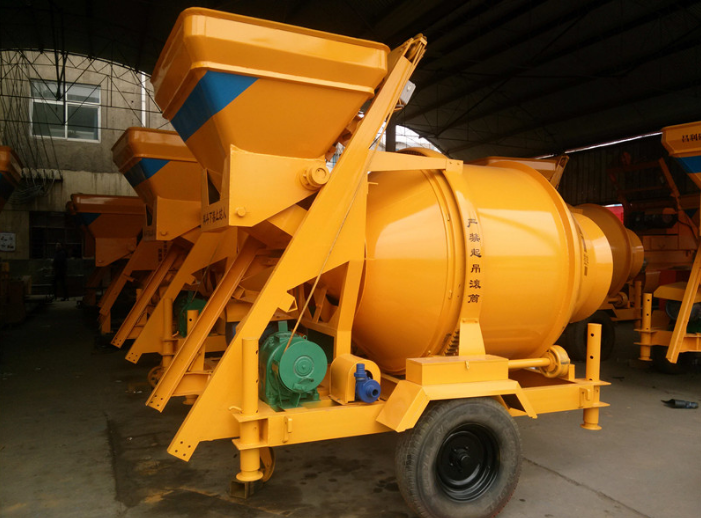Concrete Mixers Selection Guide: Types, Features, Applications
Concrete Mixers Information
Concrete mixers are used to mix concrete during the processing of water, cement, and aggregate media, or during the delivery and final pour preparation. These mixers use a motor, a revolving drum, and a chute to mix the components homogeneously. Materials spin around in the drum, mixing together evenly while remaining soft for the application and formation of the concrete.

Applications
Concrete mixers, also known as cement mixers, range from large commercial mixing trucks to small portable mixers, often called "mini mixers." Commercial concrete mixers are typically used for mixing and transporting large volumes of concrete to construction sites. For batches of concrete up to two cubic yards (1.83 cubic meters), portable concrete mixers are sufficient. These portable mixers are usually powered by electricity and mounted on a wheeled base for easy transport.
Types
According to different mixing principles, the concrete mixers can be divided into self-falling type and compulsory mixing type. According to whether they are movable, it can be divided into mobile type and stationary type. According to the nature of work, they can be divided into intermittent type and continuous type.
When selecting a concrete mixer, there are two main types: mobile and stationary dispensers.
- Mobile Concrete Mixers: These mixers are used for batching concrete in one area and then moving to another. Mobile concrete mixers, such as trucks, are often used for pouring sidewalks and other applications where concrete is needed in multiple locations. They allow the user to control the amount of concrete needed in one area at a time and provide the ability to add additional media to the batch. Mobile mixers can mix concrete and other materials without adding extra water.
- Stationary Concrete Mixers: These mixers are designed to stay in place while concrete is being poured. Common types of stationary mixers include:
- Twin-shaft Mixers: Known for high-intensity mixing and short batch times, these are commonly used for mixing high-strength concrete in batches of 2-6 m³.
- Vertical Axis Mixers: Including pan and planetary mixers, these are typically used for precast and prestressed concrete, colored concrete, small concrete batches, and applications requiring multiple discharge points.
- Drum Mixers: Used for producing large volumes of concrete, these mixers are noted for their high production speeds, low maintenance, and suitability for slump concrete.
Other types of concrete mixers may also be available for specific applications.
So, Is a Concrete Mixer Worth It?
If you only do occasional small jobs, renting a concrete mixer should be enough to get by. Rental costs may be cheaper long-term than buying equipment that sits idle. However, if you frequently pour concrete, purchasing your own mixer can pay off within just a few big projects.
While a mixer can handle any concrete job, its necessity depends on the task size. Small jobs, like pouring stepping stones or concrete planters, don't require a mixer. A bucket, drill, and paddle attachment can manually mix small batches effectively and are sufficient for most situations. However, for large jobs that involve pouring multiple wheelbarrows of concrete, a mixer is essential for completing the work efficiently.
 предыдущий: What is a Concrete Recycling Plant?
предыдущий: What is a Concrete Recycling Plant?












